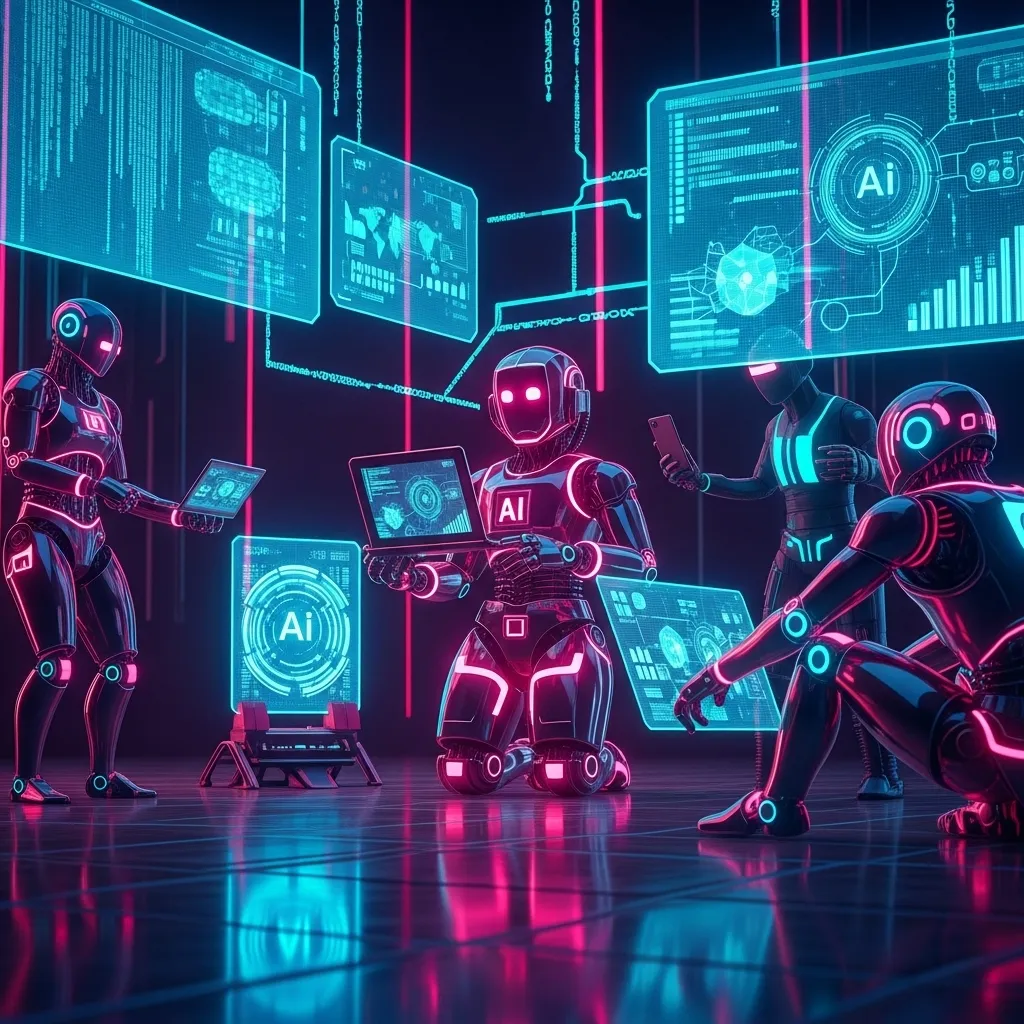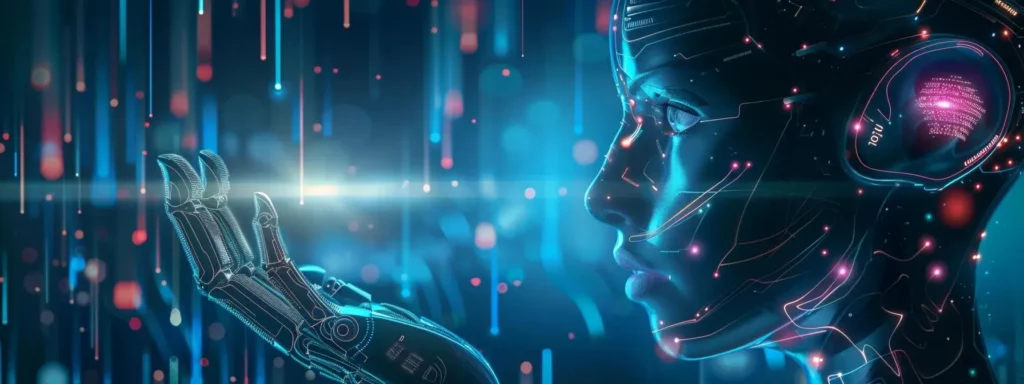Artificial intelligence (AI) is changing at an unprecedented pace, and two of the most potent subdivisions of AI, generative AI vs predictive AI, are transforming the way we work, create, and make decisions. Even though both of them use data and machine learning, their goals could not be more opposite. One of them is committed to the new ideas, text, or images development, the other one is committed to the future prediction on the basis of the existing patterns.
Understanding the difference between generative AI vs predictive AI is essential in today’s digital era. The creative applications of generative AI include ChatGPT and DALL-E that can produce original content independently. However, predictive AI is the driver of the forecasting machines in finance, healthcare, and retail to make decisions based on the data.

Overview About Generative AI (GenAI)
Teams compare generative AI vs predictive AI to decide whether a task requires new content creation or data-driven forecasting. Generative AI is a form of artificial intelligence that creates new content using patterns learnt. Generative AI is referred to as the creative artist of AI because it has the ability to imagine new possibilities based on the available data. It is a reply to an input made by a user in the form of original text, pictures, code, audio or video. A vast quantity of data will train a generative model, which will produce results similar, but not identical to the examples that it was trained on. In one of the examples, the large language models are trained to predict the next word in a sentence to produce human-like responses. The foundation models of the modern generative AI applications include GPT or DALL-E.
What is Generative AI Used For?
- Content creation: It produces articles, reports and other text materials. Simple prompts can be used to generate emails, summaries, or marketing copy using generative AI. It is used by companies to automate writing such as news briefs or blog posts.
- Image and art generation: DALL-E and Midjourney are tools that generate unique images and artwork based on text descriptions. They allow quick drawing of illustrations or product designs that were not there before.
- Code and software development: Generative models (e.g. GitHub Copilot) are used to write and debug code. They are used to autocomplete lines or create code snippets to assist programmers in creating software prototypes.
- Chatbots and assistants: Virtual assistants such as ChatGPT are generative AI applications that can be used to have a conversation with a human, respond to queries, or offer customer service. They create answers in real-time in a conversational format.
- Educational content: Generative AI has the ability to create study guides, practice problems and simulations to learners. It is able to customize learning resources (such as sample essays or quizzes) to various levels and needs.
- Entertainment and media: It is applied in the production of music compositions, scripts, or game material. Game creators may apply generative AI to create characters or levels, whereas writers apply it to story ideas.
Advantages of Generative AI
- High creativity and innovation: Generative AI can propose novel ideas and content that humans might not consider. Many see this as having transformative potential; one survey found 64% of data leaders believe generative AI could be the most transformative technology of a generation. It quickly brainstorms concepts and alternatives.
- Efficiency and speed: It produces content much faster than manual methods. A single prompt can yield a draft article or image in seconds, saving time on tasks like writing or design. Some estimates suggest generative AI could boost productivity by about 0.1–0.6% per year on average.
- Cost savings: Automation of creative work can help a business save on labor expenses. An instance is automatic generation of ad copy or simple art, which will reduce the cost of outsourcin
- Personalization: Generative systems have the ability to tailor outputs to particular users. They are able to change the style of language or visual contents to suit the preferences of various audiences, which make the contents more interesting.
- Accessibility: These tools are accessible and user friendly. Non-experts are able to produce complex outputs (such as reports or pictures) without extensive technical expertise.
- High adoption: Generative AI is already used by many employees. As an illustration, a survey has discovered that 61 percent of workers have used tools such as ChatGPT, but 60 percent of them have difficulties in verifying the findings.
Disadvantages of Generative AI
- Accuracy and hallucinations: Models sometimes produce false or misleading content. They can “hallucinate” information that isn’t in the training data. In one study, AI chatbots gave incorrect answers 58–82% of the time on legal questions. This unreliability requires heavy human review.
- Explainability issues: It can be very difficult to know why a generative model has created a particular output. IBM observes that generative AI is not explainable, and its outputs are hard to trace or believe.
- Bias and ethical concerns: Generative AI is trained on data which can include biases or sensitive information. In the absence of close supervision, it may create biased or unsuitable content that is based on the biases.
- Quality control: Because of the large volume of content produced by models, it needs to be reviewed by checking quality, tone, and accuracy. This is able to compensate part of time savings and still needs expert examination.
- Legal and IP issues: Generated content can accidentally reproduce copyrighted material. As an example, it can be a mixture of fragments of safeguarded text or pictures. This brings up the issue of copyright infringement and plagiarism.
- Misuse risk: Bad actors may use generative AI to generate persuasive disinformation, spam, or malicious code. As an example, it may write malware or counterfeit news articles in bulk.
- Resource demands: Large generative models are computationally and energy-intensive to run and train. This is costly and it has environmental effects.
- Is ChatGPT predictive or generative? ChatGPT is a clear-cut generative AI. It does not predict future events as predictive AI does and it is used to create new text by predicting the next word in a sentence.

Overview About Predictive AI
Predictive analytics, also known as predictive AI, is a predictive technology that uses past data to predict the future. It combines machine learning and statistical analysis to identify trends in historical data and forecast the probable results. As an illustration, a predictive model could use the years of sales data to predict the revenue in the next quarter, or examine equipment logs to predict maintenance requirements. Algorithms such as regression, decision trees, clustering, and time-series models are usually used in predictive AI. These models may be simple linear regression to complicated neural networks. Predictive AI is commonly referred to as the fortune teller of business, as it predicts what may occur next based on the previous information.
What is Predictive AI Used For?
- Sales and demand forecasting: Predictive AI is used by businesses to predict the volume of sales in the future and inventory management. As an example, retailers predict the quantity of stock to order per season.
- Customer behavior prediction: Firms forecast customer churners or purchasers, using historical behavior. Predictive models can be used by analyzing user history to identify at-risk customers or the most suitable audience to a marketing offer.
- Fraud detection and risk analysis: Banks and insurers have predictive models that identify fraudulent transactions or gauge credit risk. The AI is trained on prior fraud cases to identify red flagging.
- Maintenance and operations: Predictive AI is used in manufacturing or aviation to predict equipment failures based on sensor data. This predictive maintenance is used to repair machines before they fail.
- Healthcare forecasting: Predictive models are applied by hospitals and clinics to find patients at risk of conditions. Through medical records analysis, AI will be able to identify health problems at an early stage and enhance patient care.
- Marketing and personalization: Predictive AI predicts the results of campaigns and customer preferences. It is able to propose product suggestions based on buying behaviour.
- Supply chain optimization: It predicts demand and delivery times, helping logistics teams plan routes and inventory to avoid shortages or delays.
- Weather and environment prediction: Meteorologists use predictive models to forecast weather patterns or climate trends based on historical data.
Advantages of Predictive AI
- Data-driven decision support: Predictive AI offers quantitative predictions to inform strategy. It can also forecast demand, risks or revenue by analyzing the trends in data to make informed decisions by the leaders.
- Time and cost savings: Data analysis automation will release employees to more sophisticated work. According to one source, predictive tools deal with routine work to allow employees to concentrate on decisions and creativity.
- Operational efficiency: Predictive AI is efficient in resource optimization by anticipating requirements. It assists firms in distributing inventory, personnel and budgets more effectively.
- Personalization: Predictive models are able to predict customer needs (e.g. suggest a product that a customer is likely to desire), enhancing user experience and loyalty.
- Early risk detection: Models draw attention to the possible issues. As an illustration, early identification of probable equipment malfunction or unforeseen declines in sales can be mitigated in advance..
- Explainability: A lot of predictive models are based on clear statistics. IBM observes that these models are mostly easier to interpret since they involve transparent data correlations.
- Is Google predictive or generative AI? Google uses both approaches. Its core search engine uses predictive AI to rank information, while its Bard chatbot is generative. Google advises using search for factual queries and Bard for creative tasks like code generation or caption writing.
Disadvantages of Predictive AI
- Data quality dependence: Predictive models are based on quality historical data. Wrong predictions are caused by biased, incomplete or outdated data.
- Lack of creativity: These models are not capable of creating new ideas or content. They simply project the current trends.
- Uncertainty and assumptions: Guesses are not certain. According to one specialist, predictive AI is not the measurement of certainties, but the possibilities. There is always a margin of error in results.
- Model complexity: Predictive models Advanced predictive models are complex and need tuning. Conditions change and they frequently require retraining.
- Domain limitations: A model that is trained in one setting might not be effective in a different setting. An illustration is that a sales model can be ineffective when the behavior of the customers changes radically.
- Privacy concerns: Predictive analytics usually operate on sensitive information (such as personal or financial records). The processing of this data brings about privacy and compliance concerns.

Summary Comparison of Generative AI vs Predictive AI
The following table highlights key differences between generative AI vs predictive AI:
| Aspect | Generative AI | Predictive AI |
| Primary function | Create new content (text, images, code, etc.) | Forecast or classify future events or values |
| Data requirement | Large, diverse datasets (e.g. internet text, images) | Structured historical data (sales records, sensor logs) |
| Examples | ChatGPT, DALL-E, Midjourney, Copilot | Weather forecasts, recommendation systems, market analysis |
| Typical output | Novel text, images, audio or code | Numeric forecasts, probabilities, categories (e.g. yes/no) |
| Algorithms | GANs, Transformers, VAEs | Regression, decision trees, time-series, clustering |
| Explainability | Low – often hard to trace how the output was produced | Higher – based on clear statistical relationships |
| Speed to deploy | Instantly generates output; model training can be lengthy | Models require training but then give fast predictions |
| Use cases | Creative writing, art generation, code synthesis | Demand forecasting, risk analysis, customer churn prediction |
| Strengths | Creativity, scalability, fresh content | Accuracy (with good data), risk mitigation, clarity |
| Limitations | Possible inaccuracies (hallucinations), bias issues | Needs quality data, cannot innovate new content |
For many tasks, the choice between generative AI vs predictive AI is clear: use generative AI for creativity and content creation, and predictive AI for forecasting and analysis.
When Generative Meets Predictive AI
In practice, generative and predictive AI tend to be complementary to one another. As an illustration, generative AI can generate synthetic data that can be used to augment datasets to predictive models. On the other hand, predictive models have the ability to assess or screen the results of generative systems. An example is a marketing team generating a few ideas on a slogan, and with the help of generative AI, they write the slogan and predictive analytics to determine which slogan will increase sales the most.
Another synergy is retrieval-augmented generation (RAG). In RAG, a generative model retrieves information from a knowledge base to ground its output in facts. IDC predicts that by 2025, approximately two-thirds of firms will be using generative AI with their domain data to enhance decisions by up to 50 percent. It implies that a lot of companies will rely on generative AI to suggest ideas and use predictive information based on the data to select the most suitable ones. Such a combination can be very effective.
As an example, a development team could generate a series of design variants using generative AI, and a predictive model to predict which design will be most attractive to customers. Another example is that the generative AI can be used to simulate customer reviews of a new product concept, and predictive analytics can use the simulations to forecast market demand. Practically, the synergy may be direct: one model provides the candidates and the other one scores them.
Conclusion
In summary, understanding generative AI vs predictive AI helps businesses choose the right approach: use generative models when you need new content or creative ideas, and use predictive models when you need forecasts or insights from data. Finally, it is important to remember the merits of each method to ensure that organizations using AI to solve new problems remain conscious.
At Designveloper, we are convinced that the future of artificial intelligence is not in the decision to use either generative or predictive AI, but in the ability to combine both. Generative AI is creativity and predictive AI is clarity; and we are on a mission to combine those two abilities to our clients as a leading web and software development company in Vietnam.
We have created 150+ projects around the world in the last ten years which include applications of AI, data analytics, and automation: Lumin, an adaptive collaboration platform based on machine learning to streamline workflows, to AI-based chat bots that run within enterprise software. Our team consists of specialists in AI/ML development, custom software, mobile apps, and data engineering to develop products that are intelligent, adaptable, and efficient.


